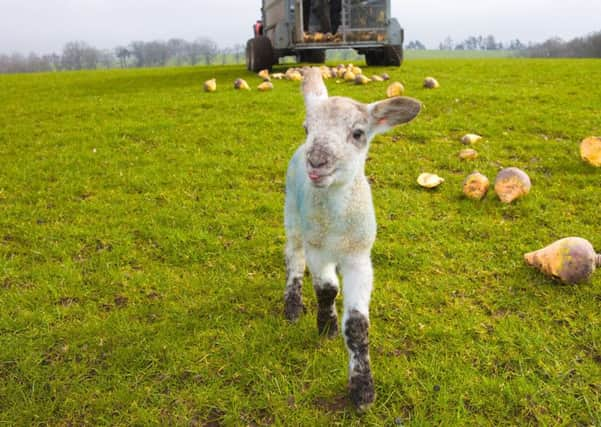100 Weeks of Scotland: Lambing season at the farm


I wanted to visit a farm in the midst of the lambing season and was very kindly invited to come along by Duncan McEwan and his wife Rebecca who along with Duncan’s father, Duncan senior and mother Anne, run the farm. This is an incredibly busy time of year for sheep farmers and with 600 head of sheep Arnprior Farm is no exception.
Within minutes of arriving I was been shown around the lambing pens and given a quick lesson on just how the process works. The pregnant sheep, all due to lamb imminently, were kept in communal pens of about thirty sheep. Once the sheep had given birth to their lambs they would, after only a few minutes, be moved into individual pens where the mothers would bond with their babies and they would be examined and watched over to check all was well. Lambs are very susceptible to infection at this stage and are treated with iodine to try and reduce the risks.
Advertisement
Hide AdA team of trainee vets were on placement at the farm and they were providing valuable help and gaining incredible first-hand experience of the whole process of lambing. Most were first years and the knowledge they already displayed was hugely impressive. After a day or so the ewes with their newborn lambs are moved out of the pens and are taken up into the gentle sloping farmland in the shadow of the Campsie Fells where they are released onto the lush spring grassland. After releasing the sheep and the lambs, Duncan stays with them for the mothering-up. He has to ensure that the lambs and their mothers don’t become separated. Later we will come back to the fields again to drop dozens of turnips from the trailer for the flock to eat.
The grass is still not long enough for Duncan to be entirely happy – it has not been warm enough this year yet.
Nearby, at a sheep fank nestled into the hills, Duncan was soon showing the trainee vets how to administer supplements to the sheep using a padded squeeze crush. As the land locally is deficient in certain minerals supplements, including copper and cobalt, these must be given manually to the flock. These sheep are then driven down the hill and across the main road into the farm, where they will take their place in the lambing pens and soon will be giving birth.
Without a doubt the highlight for me was watching a lamb being born. To see a newborn animal take its first breath is a wonderful thing. The skill of Duncan senior, and the trainee vet, in delivering the lamb was incredibly impressive – I watched as they stroked the lamb, and then very gently inserted a piece of straw into the nostril to stimulate the breathing. Within seconds this tiny, greasy little bundle was teetering on legs that seemed to want to go in four different directions at once. A really enjoyable experience and I was so completely engrossed that I forgot to take any pictures – luckily it was twins and as the second lamb appeared I was ready…
For me the day had ended, but as I headed off into the fading light I realised there would be no rest on the farm. Duncan’s mother Anne would soon be on the night shift, checking the pens, watching the sheep, and delivering the lambs when the time came. Hard, hard work, but rewarding. So very rewarding. Rewarding for me also, as this has been far and away my favourite week of photographs so far.
• Alan McCredie began the ‘100 weeks of Scotland’ website in October last year, and it will conclude in Autumn 2014. McCredie’s goal is to chronicle two years of Scottish life in the run-up to the independence referendum.
Advertisement
Hide AdAlan says ‘one hundred weeks...’ is intended to show all sides of the country over the next two years. On the site, he says: “Whatever the result of the vote Scotland will be a different country afterward. These images will show a snapshot of the country in the run up to the referendum.
“The photos will be of all aspects of Scottish culture - politics, art, social issues, sport and anything else that catches the eye.”
Follow the project at www.100weeksofscotland.com. You can also follow Alan on Twitter @alanmccredie.